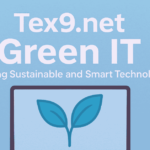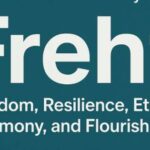When selling a home, you should never assume that your property speaks for itself.
Your ability to make a quick sale at a good price depends on how you market the property. You also need to convince potential buyers that their dream home stands before them.
This is all the more crucial in a downward-facing housing market, with prices falling and demand waning across much of the US.
This is why real estate photography is so important to get right. This is the visual tool that you can use to capture the attention of the right buyer that will pay the price you deserve for your property.
Photography is a highly sought-after service in the real estate industry. Without it, houses would not sell. Here are the main types of real estate photography that people typically deploy to sell houses.
Architectural Real Estate Photography
This style focuses on capturing the overall structure, design, and aesthetic appeal of a property. It’s all about clean lines, symmetry, and the interplay between light and shadow.
Architectural photographers use techniques such as wide-angle lenses and careful framing to highlight the grandeur and unique architectural elements of a building.
Such techniques are often used for architecturally significant properties, often at the very top end of the luxury market. However, the style is gradually becoming more popular on the lower end of the scale.
Exterior Photography
This might sound similar to architectural photography. However, the approach and end-goal are very different in exterior photography.
Here, it’s all about capturing the curb appeal and exterior features of a property. It includes shots of the façade, landscaping, gardens, swimming pools, and outdoor living areas. Since these are often the features that “sell” a home, these are given priority during a shoot.
The goal is to portray the property’s exterior as visually striking and well-maintained. Exterior photographers often consider the best time of day to shoot, taking advantage of natural lighting to enhance the property’s appeal.
As you might have guessed, this style works best for suburban or country homes, with a lot of outside space.
You will very rarely find this style used for apartments or urban properties, unless the building has particularly noteworthy exterior amenities such as a rooftop garden or pool.
This style is often used to sell properties to young families, who may treasure outdoor spaces the most. As anyone working in real estate will tell you, this is how you get the best price – by tailoring your marketing to the audience.
Interior Photography
Interior photography is one of the most universal photography styles in real estate. By this, we mean that every listing of any description will have it to some extent.
This type of photography aims to showcase the interior spaces of a property, including living rooms, bedrooms, kitchens, and bathrooms. The goal is to capture the ambiance, functionality, and design details that make a house or apartment visually appealing.
Interior photographers utilize lighting techniques to create a warm and inviting atmosphere, while also ensuring accurate color representation.
In a nutshell, this is all about helping the audience visualize themselves living there. It’s what turns a property from a listing into a potential home. There are few selling tools more powerful than that.
Drone Photography
Drone photography is one of the most in-demand photography jobs on the market right now. It has gained immense popularity in real estate marketing in recent years.
It involves capturing images from elevated positions, such as drones, to provide a unique perspective of the property and its surroundings. It gives a potential buyer the full picture.
They can see the true size of the property, the exterior condition, and the surrounding area. It is a more “honest” photography type that can build trust with a potential buyer.
When finding a job in real estate, the first thing any pro will tell you is that trust is essential when selling homes. This is what drone photography aims to provide.
Aerial shots offer a comprehensive view of the property’s location, nearby amenities, and scenic surroundings. This gives potential buyers a better sense of the overall environment.
360 Photography
Thanks to recent advances in technology, virtual tours and 360-degree photography have become popular in the real estate industry.
These immersive experiences allow potential buyers to navigate through a property virtually, giving them a realistic sense of space and layout.
Virtual tours can be created using specialized equipment or software, enabling users to explore a property from different angles. As you can guess, this style really took off during the pandemic.
However, remote viewing tools like this are here to stay, as they give people anywhere an easy way to get to grips with a listing and make an informed decision before heading over to see it IRL.
Twilight Photography
Twilight photography is a specialized style that showcases properties during the transition between daylight and evening. This technique creates a captivating and dramatic effect by balancing artificial interior lighting with the soft hues of twilight.
Twilight shots often highlight the exterior lighting, pool areas, and the warm glow emanating from the windows, evoking a sense of luxury and elegance.
Commercial Real Estate Photography
Commercial real estate photography can encompass all of the styles above. However, the purpose is different. After all, no one is looking to live in an office or warehouse.
What they want is a space that is functional, offers what they need, and can strengthen their company brand. Commercial real estate photography is an exceedingly specialized skill. It requires not only great photography but also flawless editing.
After all, edits are often the best way to make a standard office building look truly special. You can click here for more insights on the skills behind effective commercial real estate photography.
What Makes a House a Home?
All properties have something worth shouting about. Real estate photography just brings those good features to life.
But what is it that makes a house truly a home?
Is it distinct architecture? Is it good curb appeal? Is it soft natural lighting?
We can all agree that it is something deeper, more personal.
In our Lifestyle sections, you can find actionable guidance on how to transform your house into a home that feels truly yours. Check it out today.










